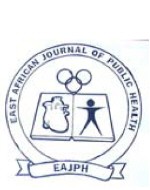
|
East African Journal of Public Health
East African Public Health Association
ISSN: 0856-8960
Vol. 3, No. 2, 2006, pp. 14-18
|
 Bioline Code: lp06010
Bioline Code: lp06010
Full paper language: English
Document type: Research Article
Document available free of charge
|
|
|
East African Journal of Public Health, Vol. 3, No. 2, 2006, pp. 14-18
| en |
ASYMPTOMATIC PARASITAEMIA AND PLACENTAL MALARIA INFECTION AMONG PREGNANT WOMEN IN KIGOMA URBAN DISTRICT, WESTERN TANZANIA
Kagoma S. Mnyika, Titus K. Kabalimu and Godfrey Mbaruku
Abstract
Objective: To determine the magnitude of malaria infection and anaemia among pregnant women in Kigoma Municipality, western Tanzania.
Setting: An urban maternal and child health clinic (MCH) located in the Kigoma Municility in western Tanzania.
Methods: A cross-sectional study was conducted in an urban MCH clinic in Kigoma Municility. Informed consent to participate in the study was sought from each pregnant woman. Consenting Pregnant women were interviewed to solicit for socio-demographic characteristics and information relating to use of malaria preventive measures. The women were also examined for anaemia and malaria parasitaemia. At delivery, the women were also examined for malaria infection of the placenta. The research was cleared by the Ethical Clearance Committee of the Muhimbili University College of Health Sciences, Dar es Salaam. Data were managed and analysed using SPSS/PC+ for windows.
Results: The mean age of the pregnant women was 26.7 years (SD = 5.4) with the youngest woman being 14 years and the oldest being 45 years. The response proportion to participate in the study was 96.7% (N= 705). It was found that 8.4% of the women examined had asymptomatic malaria parasitaemia while2.8% had malaria infection of the placenta. Women with placental malaria were more likely to deliver low birth weight babies than others (8.8% versus 2.1%. Pregnant women who reported using bednets were less likely to have placental malaria compared to those not using bednet (2.2% versus 3.3%). Similarly, pregnant women who reported using bednets were less likely to have asymptomatic malaria parasitaemia than others (5.9% versus 10.4%).
Conclusions: We conclude that placental malaria occurs in Kigoma municipality and it appears that use of bednets might be an effective strategy in controlling malaria among pregnant women in Tanzania.
|
| |
© Copyright 2006 - East African Journal of Public Heath
|
|
